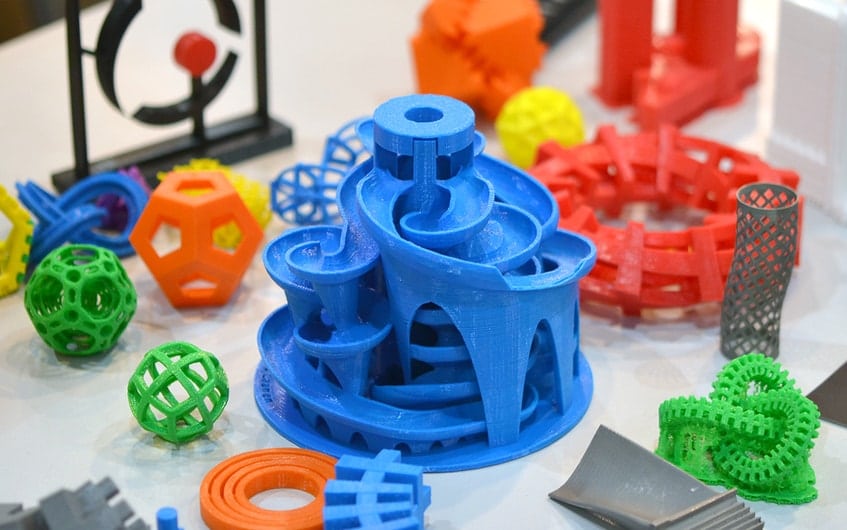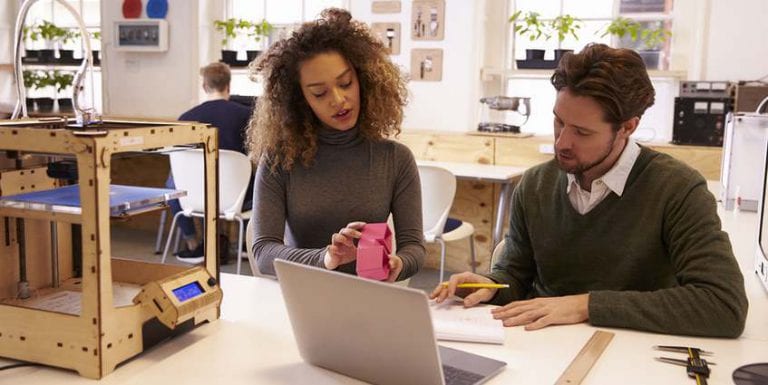Three-dimensional (3D) printing is new and fascinating technology, presenting possibilities that were only dreamed about before. While there is a certain amount of artistic experimentation surrounding 3D printing, many businesses in many industries are already incorporating the technology into their operations.
Primarily, 3D printing is used for accelerating product development, creating limited series of customized products, and rapid prototyping, though the number of potential uses for the technology is practically unlimited.
The good news is that small businesses that don’t have the budget to acquire their own 3D printer can contract with a growing number of contract 3D printing companies in order to take advantage of the many benefits of the technology.
But 3D printing is still a relatively expensive undertaking, so it’s smart for companies that use it for prototyping or product development to have defined workflows for accessing 3D printing technology, whether it’s located on-site or contracted out. Creating automated workflows to control the 3D printing process, from idea conception through the creation of the physical object is the best way to keep costs and waste down while branching out into this exciting new technological marvel.
Creating the Data That Drives 3D Printing Is a Process
In order for a 3D printer to create an object, it must have a set of meticulous and precise instructions, just like your laser printer needs exact instructions so it “knows” when to print on both sides of the paper, when to turn documents from portrait to landscape orientation, and when to accommodate non-standard paper sizes.
But throwing instructions at a 3D printer and seeing what comes out is a luxury few can afford. Therefore, creating an automated workflow for computer modeling, conversion to the proper file type for the printer, and model optimization is important for maximizing creativity and efficiency at the same time while minimizing wasted effort.

Automated Workflows Reduce Mistakes, Do-Overs
When you create a custom workflow application for, say, a 3D-printed prototype of a custom, limited edition container you plan to create for your product, you need to minimize the number of attempts it takes to get it exactly right.
When someone creates a computer model, it should be reviewed by a separate person to look for mistakes and potential problems. Once the model appears to be up to standards, approval can be granted, and the print file can be converted to the right file format for the printer. If you’re contracting with a 3D printing provider, the print file can be delivered electronically with “read” receipt, so you know the provider received it. By creating an automated workflow around 3D printing, you have the checks and balances you need to ensure that do-overs are kept to a minimum.
On-Site or Outsourced, 3D Printing Benefits from Defined Workflows
It’s easy to see how workflow automation make sense for 3D printing done in-house because you don’t want everyone clamoring to use the machine at once and causing conflicts. But workflows are just as important when you outsource 3D printing, because everybody involved in a project that requires 3D printing should be kept apprised of where the project is at any given time. Automated form workflows allow all authorized personnel to check and see that the design was reviewed and converted to the right format, and the contractor received it yesterday afternoon. Everyone stays on the same page, in other words.
PerfectApps is workflow software that empowers users to create custom automated workflows, via an intuitive user interface that offers tremendous flexibility. You can create a workflow for assigning cubicles, and then create a workflow for having a prototype 3D printed, all with the same software. We would love to talk to you about the nearly limitless potential PerfectApps offers to businesses just like yours, whether or not 3D printing is in your future. We encourage you to contact us at any time and look forward to hearing from you.





